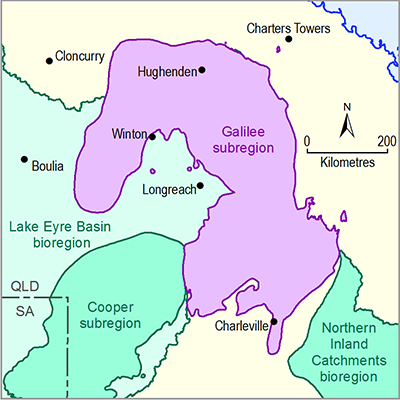Groundwater in Queensland is managed under the Water Act 2000 through subsequent Water Resource Plans (WRP), Resource Operations Plans (ROPs) that are prepared for proclaimed/declared areas (Queensland Government, 2013a, 2013b, 2013c), or through declared Sub-artesian Areas under the Water Regulation 2002. ROPs provide the operational details to meet the goals of Water Resource Plans, including monitoring and reporting. The applicable water resource plan or sub-artesian area outlines the licence requirements for the take of water as well as the permit requirements to construct bores.
A licence is generally required for:
- extraction of groundwater for purposes other than stock and domestic use within proclaimed/declared areas (Water Resource Plan areas, declared Sub-artesian Areas)
- taking artesian water for any purpose and from any location.
It should be noted that a licence is required for the taking of sub-artesian water hydraulically linked to GAB artesian water for stock purpose in some parts of the Great Artesian Basin WRP.
Metering of groundwater extraction can be required for licensed groundwater access.
Water Resource Plans are generally catchment-based for surface water management, and may include specific groundwater management areas (GMAs) and may also regulate groundwater hydraulically connected to surface water. The Great Artesian Basin Water Resource Plan differs in that it applies to artesian water and connected sub-artesian water in an area that spans parts of several surface water catchments. Groundwater in the Galilee Basin and potentially impacted areas is managed under the Water Resource Plans described in Table 6 . Sub-artesian Areas which also regulate groundwater in the Galilee Basin include the Highlands Sub-artesian Area and Great Artesian Basin Sub-artesian Area.
The general reserves for a water management area are shown in Table 6. The Water Resource Plan (Great Artesian Basin) was published in 2006 (Queensland Government, 2013b). The Great Artesian Basin WRP includes aquifers from Galilee Basin, specifically the Clematis Group, Warang Sandstone, and Rewan Group, as well as aquifers found within the overlying Eromanga Basin. The GMAs usually include stratigraphic units from the Eromanga and Galilee Basins. The Western GMA is the only area that is exclusively Eromanga Basin.
As there is not one management unit that considers the general reserves for the Galilee Basin subregion, they must be inferred from seven plans that overlap with the basin. Further analysis is required to understand the percentage of allocation for each Water Resource Plan within the Galilee Basin.
Table 6 Water Resource Plans and Groundwater Management Areas
Source: Compiled from National Water Commission (2011) and Queensland Government (2013a, 2013b, 2013c). GMU: Groundwater management unit GMA: Groundwater management area

